Related Research Articles
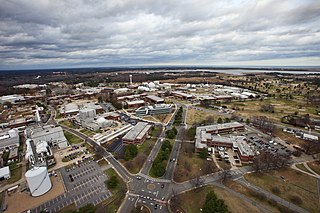
The Langley Research Center, located in Hampton, Virginia near the Chesapeake Bay front of Langley Air Force Base, is the oldest of NASA's field centers. LaRC has focused primarily on aeronautical research but has also tested space hardware such as the Apollo Lunar Module. In addition, many of the earliest high-profile space missions were planned and designed on-site. Langley was also considered a potential site for NASA's Manned Spacecraft Center prior to the eventual selection of Houston, Texas.
The space-grant colleges are educational institutions in the United States that comprise a network of fifty-two consortia formed for the purpose of outer space-related research. Each consortium is based in one of the fifty states, the District of Columbia, or Puerto Rico, and each consists of multiple independent space-grant institutions, with one of the institutions acting as lead.
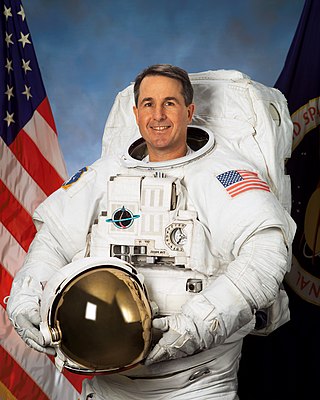
Stephen Kern Robinson is an American former NASA astronaut.

The University of Alabama in Huntsville (UAH) is a public research university in Huntsville, Alabama. The university is accredited by the Southern Association of Colleges and Schools and comprises nine colleges: arts, humanities & social sciences; business; education; engineering; honors; nursing; professional & continuing studies; science; and graduate. The university's enrollment is approximately 10,000. It is part of the University of Alabama System and is classified among "R1: Doctoral Universities: Very High Research Activity".
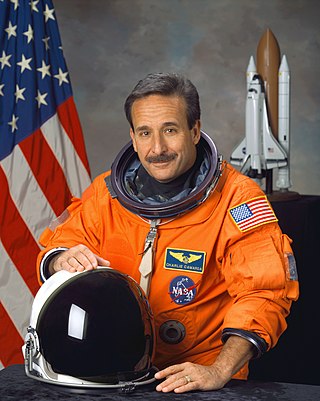
Charles Joseph "Charlie" Camarda is an American engineer and a NASA astronaut who flew his first mission into space on board the Space Shuttle mission STS-114. He served as Senior Advisor for Engineering Development at NASA Langley Research Center. and was a senior advisor for innovation at the office of Chief Engineer in the Johnson Space Center.

The Khajeh Nasir Toosi University of Technology is a public research university in Tehran, Iran. It is named after medieval Persian scholar Khajeh Nasir Toosi. The university is considered one of the most prestigious institutions of higher education in Iran. Acceptance to the university is highly competitive, entrance to undergraduate and graduate programs typically requires scoring among the top 1% of students in the Iranian University Entrance Exam.

Juan R. Cruz is a Puerto Rican aerospace engineer who played an instrumental role in the design and development of the Mars Exploration Rover (MER) and Mars Science Laboratory (MSL) parachute.
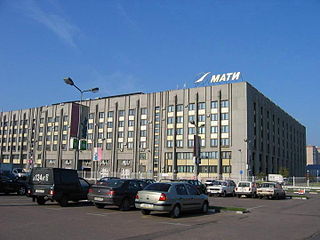
Moscow State Aviation Technological University is a university in Moscow, Russia. The modern name of this university is «MATI» – Russian State University of Aviation Technology. It is named after the Russian aeronautics and rocketry pioneer Konstantin Eduardovich Tsiolkovskii. The current name of "MATI" Russian State Technological University is "MAI" Moscow Aviation Institute
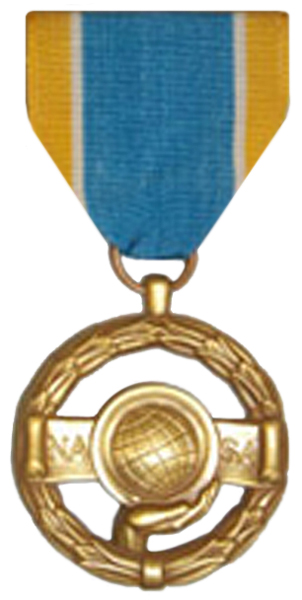
NASA's Exceptional Public Service Medal is a United States government awarded to any non-Government individual or to an individual who was not a Government employee during the period in which the service was performed for sustained performance that embodies multiple contributions on NASA projects, programs, or initiatives.

Robert David Braun is an American aerospace engineer and academic. He has served as the dean of the College of Engineering and Applied Science at the University of Colorado Boulder, the David and Andrew Lewis Professor of Space Technology at the Georgia Institute of Technology, and the NASA Chief Technologist. Currently, Dr. Braun is the Space Sector Head at the Johns Hopkins University Applied Physics Laboratory (APL).
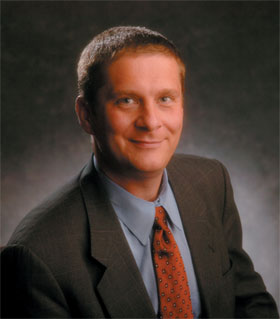
Timothy J. Broderick, F.A.C.S., is Professor of Surgery and Biomedical Engineering at the University of Cincinnati, where he has served on the faculty since 2003. He also serves as Chief of the Division of Gastrointestinal and Endocrine Surgery and is Director of the Advanced Center for Telemedicine and Surgical Innovation (ACTSI). He has flown on the NASA KC-135 parabolic laboratory and dived in the NASA Extreme Environment Mission Operations (NEEMO) program to develop advanced surgical technologies for long duration space flight.
The Virginia Tech Stability Wind Tunnel is a medium-scale wind tunnel located at Virginia Polytechnic Institute and State University in Blacksburg, Virginia. With a test section measuring 6 by 6 ft and maximum wind speeds of approximately 262.6 ft/s (80.0 m/s), it is one of the largest university-owned wind tunnels in the United States, and is used for a wide variety of research projects within the college as well as being contracted out for commercial use, especially product testing. Professor William Devenport is the current director, and Dr. Aurelien Borgoltz is the assistant director.

Christine Darden is an American mathematician, data analyst, and aeronautical engineer who devoted much of her 40-year career in aerodynamics at NASA to researching supersonic flight and sonic booms. She had an M.S. in mathematics and had been teaching at Virginia State University before starting to work at the Langley Research Center in 1967. She earned a Ph.D. in engineering at George Washington University in 1983 and has published numerous articles in her field. She was the first African-American woman at NASA's Langley Research Center to be promoted to the Senior Executive Service, the top rank in the federal civil service.

Professor Bhagavatula Dattaguru is an Indian engineer and academic. He has received several awards, including the Padma Shri Award, India's fourth highest civilian honour in 2005 in the field of science and engineering.

Mary Jackson was an American mathematician and aerospace engineer at the National Advisory Committee for Aeronautics (NACA), which in 1958 was succeeded by the National Aeronautics and Space Administration (NASA). She worked at Langley Research Center in Hampton, Virginia, for most of her career. She started as a computer at the segregated West Area Computing division in 1951. In 1958, after taking engineering classes, she became NASA's first black female engineer.

Stephen G. Jurczyk is an American engineer who served as the Acting Administrator of NASA. He previously worked at Langley Research Center in Hampton, Virginia.
Lin Chambers is an American physical scientist. She has developed and contributed to multiple international programs around science education and citizen science at NASA Langley Research Center.
The Ann and H.J. Smead Department of Aerospace Engineering Sciences is a department within the College of Engineering & Applied Science at the University of Colorado Boulder, providing aerospace education and research. Housed primarily in the Aerospace Engineering Sciences building on the university's East Campus in Boulder, it awards baccalaureate, masters, and PhD degrees, as well as certificates, graduating approximately 225 students annually. The Ann and H.J. Smead Department of Aerospace Engineering Sciences is ranked 10th in the nation in both undergraduate and graduate aerospace engineering education among public universities by US News & World Report.
Helen Louise Reed is an American aerospace engineer. Her research interests include hypersonics, energy efficient aircraft, laminar–turbulent transition, and small satellite design. She is a Fellow of the American Society of Mechanical Engineers, American Physical Society, and American Institute of Aeronautics and Astronautics.
References
- ↑ "Yongchang Li". 29 January 2016.
- ↑ See listing of researchers
- ↑ "NIA Research". nianet.org. Archived from the original on 14 July 2012. Retrieved 9 November 2011.
- ↑ "Archived copy" (PDF). technologygateway.nasa.gov. Archived from the original (PDF) on 18 October 2011. Retrieved 15 January 2022.
{{cite web}}: CS1 maint: archived copy as title (link) - ↑ Voiland, Adam. "A Look Back at a Decade of Fires". NASA . Retrieved 9 November 2011.
- ↑ "NASA - Inventing the Future".
